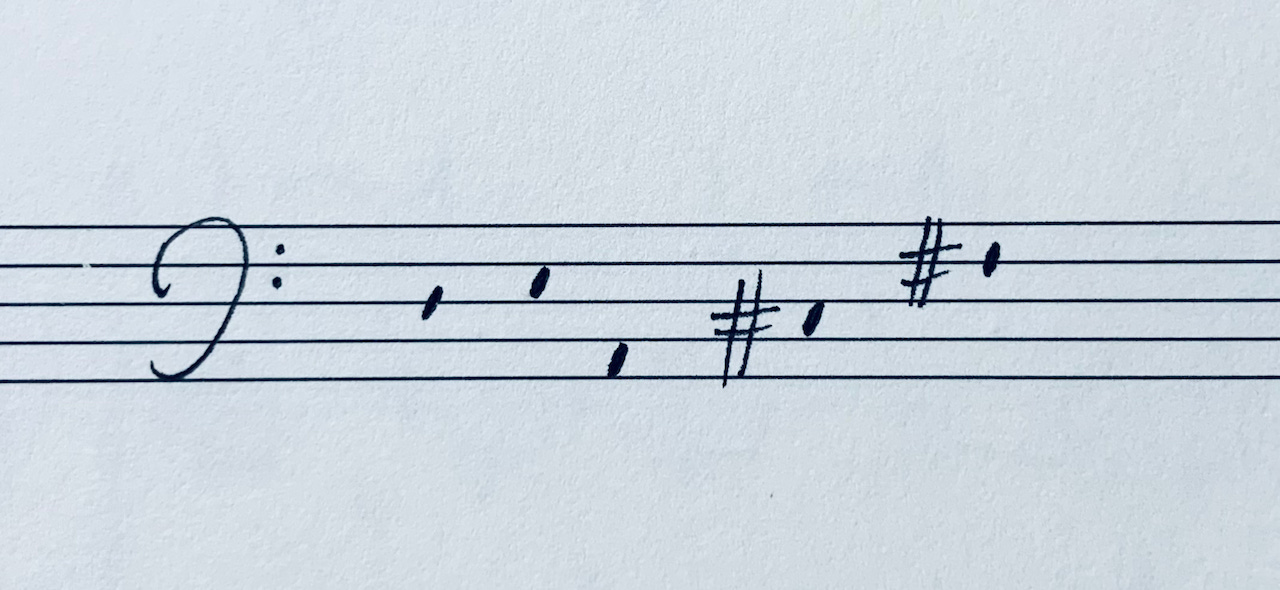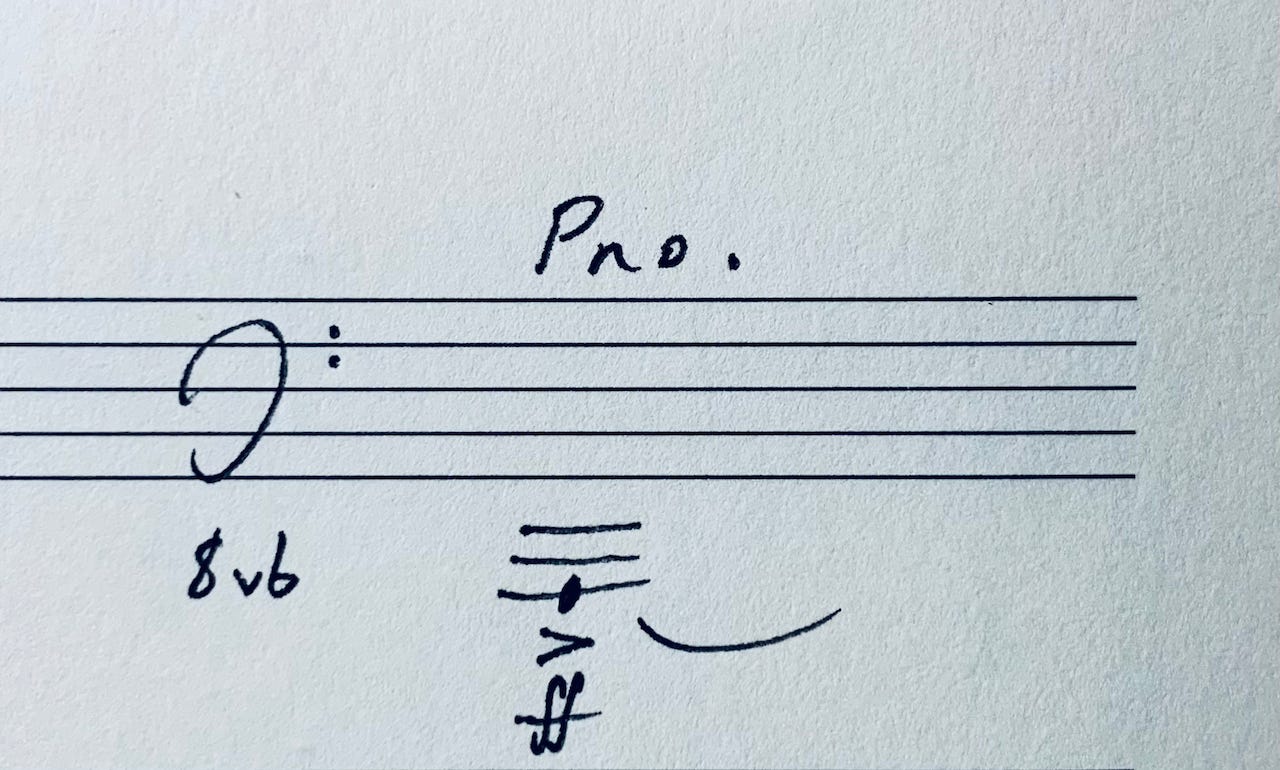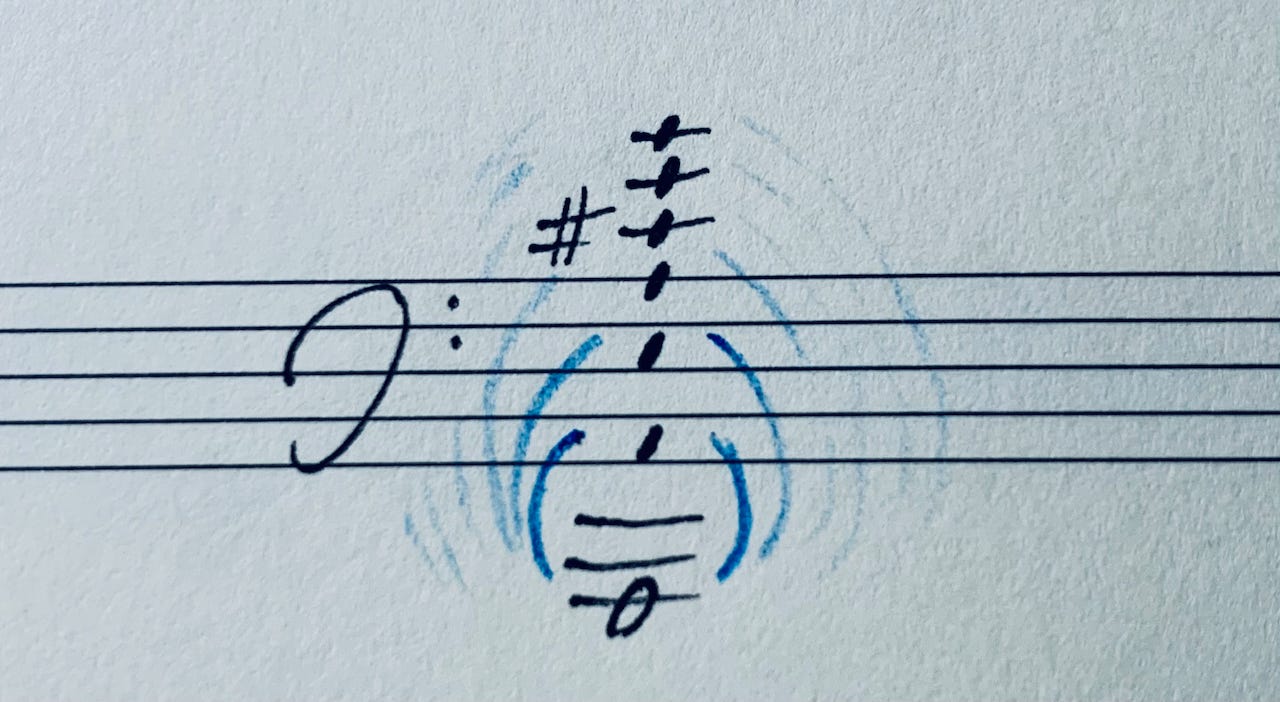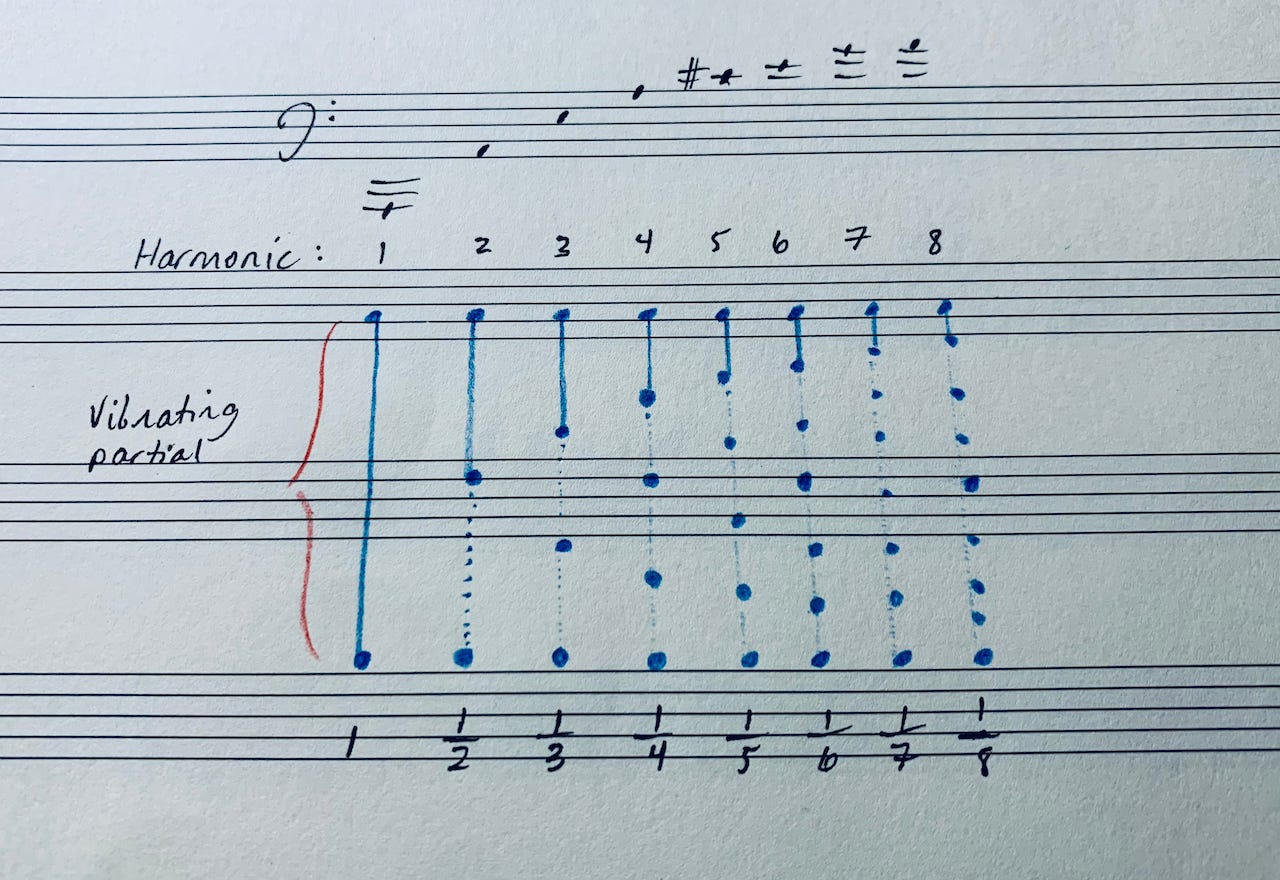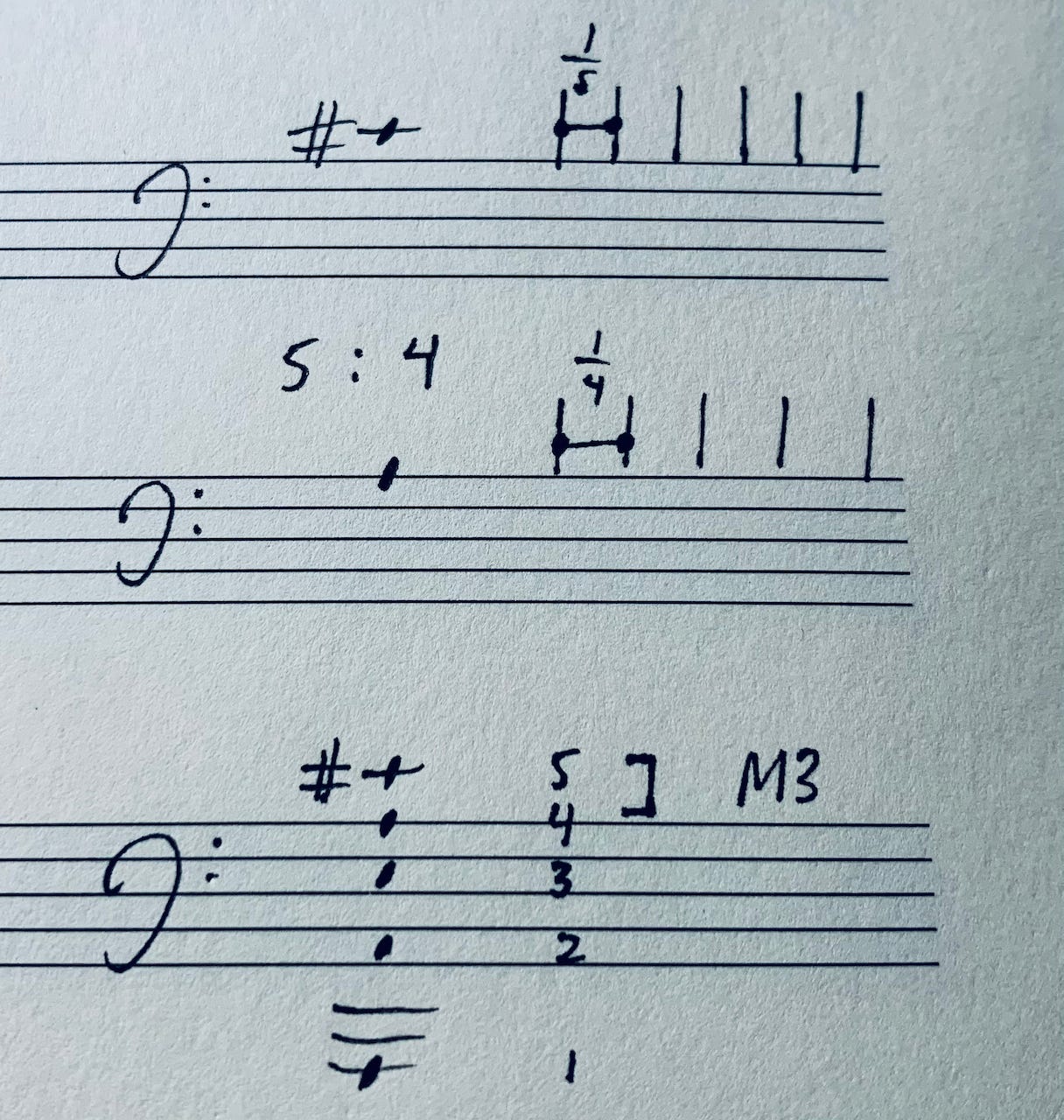Day One: Musical Sound
Sound, Fundamentals, and Overtones
You can develop a deeper connection with sound by understanding the overtone series as the basis of musical organization.
Laws of Sound
Our discussion of harmony begins with the physical qualities of sound and the musical consequences of those qualities. The laws of physics and acoustics will definitely interest a musician studying theory and harmony. Closely investigating the phenomena is how we will come to learn about the possibilities of sound, and ultimately find the roots of music in the laws of nature. This approach doesn't reduce music down to the level of science, but rather elevates it to the highest level of artistic potential by making the effect that it has on us comprehendible. The goal for studying harmony is to gain mastery over the raw materials of music so that we may eventually use it to build and exteriorize that which moves inside us.
What are the building blocks of music? Tones are the material that music is made of. Pieces of music are fabrics of tones arranged and woven together by a musician. When we open a musical score, or see music on a staff, we are actually looking at sound. The translation from the dead page to the life of the musician is absolutely key—without it music doesn't happen. A major goal for today is to awaken many of the unconscious processes that happen during this translation, starting with the phenomena of hearing tones.
A tone is a sonic unity. Tones are actually made up of an infinite number of parts, which can be broken down into two categories. The sonic entity we know as a tone is composed of a fundamental vibration and its series of overtones. The fundamental is a stable and steady vibration, one that is regular and repeating. The musical tones are the sonic opposites of noise, which are irregular, non-repeating sounds. I use tone and sound pretty interchangeably in my speech and writing, but the sound that I have in mind is a musical tone, not noise. This regular repetition that gives the tones their character is important to keep in mind since that's what distinguishes them from everything else we hear. Consider walking down the block, and you hear the voice of a singer that causes you to pause—the tones pull you out of the world for a moment—you hear a striking and fundamental contrast to the noises that color our everyday experience.
Listen closely to the tones that surround you. Pluck your guitar string, play a long tone on your sax, or even better just sing a note, and take a moment and listen and let the sound evolve in your mind. If the tone is unchanging, meaning that it isn't raising or lowering in pitch, then the vibration is stable and allows for the natural presence of the overtones—the new and higher tones that you are hearing. The truth is that those higher tones were always present, and they emerge due to no will of ours. The higher tones, or overtones, are themselves birthed by the fundamental via its own vibration. The richer the sound, the more audible the overtones. By using this experience and zooming in to sound, we find a structure that is given to us by Nature.
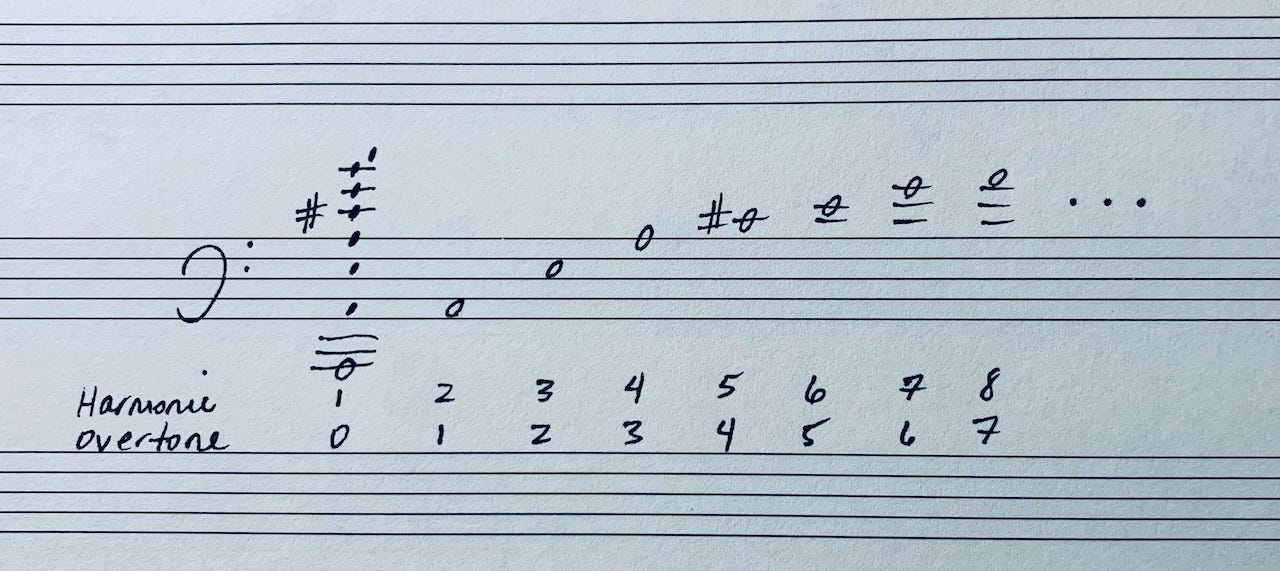
At the heart of every tone is the harmonic series, which is composed of a fundamental and its series of emergent new tones, the overtones. The whole series sounds together at the same time, and theoretically continues infinitely. The tones that appear early on in the series are closer to the fundamental in pitch and sound louder—the fundamental is the loudest sound heard. As you ascend the harmonic series the tones become weaker in volume, so in practice it’s only useful to work with the first 7 or 8 overtones, shown by Figure 3.
This natural and audible structure is remarkable because it unites abstract concepts such as number and proportion with our inner world of experience through our sense of sound. The new tones can be mathematically derived with a beautiful and simple pattern that relates each overtone with the fundamental—and the musical consequences of these mathematical relations is as remarkable as the structure itself. Every note in a piece once in motion has this entire structure at its core.
Sound-Relations
How do the tones relate to each other in nature? Each note contains a family of other notes that are in a very concrete relation to it.
The overtones strengthen and give stability to the fundamental. Each new tone in the series can be known and understood and lived as the musical intervals.
How do the intervals articulate inside the overtone series? One way to understand the harmonic series is by looking at the intervals between the overtones as fractions, or partials, of the vibrating piano string. The simple pattern is as follows: the first harmonic is 1/1, the whole vibrating string. The second harmonic is 1/2, half the string is vibrating. The third harmonic is 1/3, vibration of a third of the string. And so forth; the harmonics spell out one of the most beautiful patterns in nature!
As you ascend the series, each new tone is an interval away from the previous tone. The first interval that appears is the Octave, between harmonics 1 and 2. The next interval is between harmonics 2 and 3 and is the Fifth. Between 3 and 4 is a Fourth, between 4 and 5 a Major Third, 5 and 6 a Minor Third, between 6 and 7 is an even-smaller minor third*, and between 7 and 8, a Major Second. The series continues to extend infinitely with increasingly smaller and smaller intervals, eventually crossing into microtones beyond the limit of perception.
Each new tone is a smaller fraction of the vibrating string. Each higher tone is quieter than the last. Tones that are closer to the fundamental are louder and more a part of the overall sound. Timbre is the additive result of the volumes of each of the overtones.
The Musical Ratios
Octave 1:2
Fifth 2:3
Fourth 3:4
Major Third 4:5
Minor Third 5:6
Smaller minor third* 6:7
Major Second 7:8
*A note about the “smaller minor third.” The tones and intervals that appear in the harmonic series are born out of perfect mathematical proportions and don’t exactly fit into our calibrated equal tempered tuning system. That’s why the actual tones of the overtone series sound slightly out of tune to our ears.
The main lesson here is that the intervals appear as concrete ratios, proportions, born out of the natural harmonic series. The intervals are given by the series itself.
We will go in depth with the intervals and combinations of tones in a musical context on Day 3 of the course. But for now, we will look at the intervals more objectively: as they appear in the harmonic series.
Here is how to visualize any musical ratio using the fractional string lengths. We'll take the 4:5 ratio of a Major Third as the example, between A and C# (harmonics 4 and 5 from Figure 5). As you can see, it is 1/4th of the string sounding with 1/5 of the same string: concrete proportions made into sound.
Major 3rd
Laws of Music
What does all of this mathematical patterning and observation have to do with musicality? In one word, the answer is stability. In music the concepts that we may take for granted—establishing a tonic or departing from one, phrasing and cadencing, voicing—all more or less have to do with stability of sound.
For one, tones are very stable sounds by themselves; they derive their strength from other pitches that it itself creates. In nature the fundamental and its enriching overtones are inseparable. But there is much more to it than that. We actually have learned about harmony by examining the harmonic series.
Keep reading with a 7-day free trial
Subscribe to Letters from a Composer to keep reading this post and get 7 days of free access to the full post archives.


